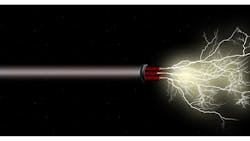This file type includes high-resolution graphics and schematics when applicable.
Changing energy from one form to another, such as solar radiation from sunlight to dc voltage, can help meet the growing global demands for energy in the years ahead. In the near term, it is also a practical means of providing power for remote sensors and other electronic devices that must be “set and forget” as part of Internet of Things (IoT) applications. Even when such devices are in standby mode, awaiting a signal, they consume energy and require a power source.
With this goal in mind, French researchers sought an alternative to a single omnidirectional antenna for collecting what RF energy was present in a room, such as in a home or factory setting. They developed a system that combines six parasitic element antennas (PEAs) and RF-to-dc converter circuits to transform RF energy into dc voltage.
The researchers focused on boosting the efficiency of an RF-to-dc home-automation system by improving the performance of an array of six rectennas within a room. Their solution was to take a cellular approach to energy harvesting within the room, combining printed-circuit-board (PCB) rectennas with RF-to-dc-conversion circuits on the same circuit board, about the size of a credit card.
Developed for use at 2.45 GHz, the compact energy-harvesting system was designed, manufactured, and tested, and found to be capable of providing enough energy to maintain additional circuits, such as an RF switch. The researchers performed simulations and computed that the system would deliver different amounts of energy based on room size; for example, 1723 and 880 mV, respectively, for rooms measuring 5 × 5 m and 10 × 10 m.
See “Multidirectional Receiving System for RF to dc Conversion Signal,” IEEE Antennas & Propagation Magazine, Vol. 58, No. 3, June 2016, p. 22.
About the Author
Jack Browne
Technical Contributor
Jack Browne, Technical Contributor, has worked in technical publishing for over 30 years. He managed the content and production of three technical journals while at the American Institute of Physics, including Medical Physics and the Journal of Vacuum Science & Technology. He has been a Publisher and Editor for Penton Media, started the firm’s Wireless Symposium & Exhibition trade show in 1993, and currently serves as Technical Contributor for that company's Microwaves & RF magazine. Browne, who holds a BS in Mathematics from City College of New York and BA degrees in English and Philosophy from Fordham University, is a member of the IEEE.



